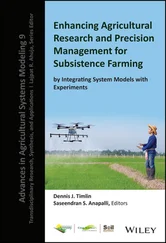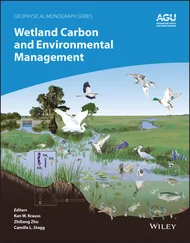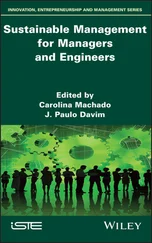Pollutants and Water Management
Здесь есть возможность читать онлайн «Pollutants and Water Management» — ознакомительный отрывок электронной книги совершенно бесплатно, а после прочтения отрывка купить полную версию. В некоторых случаях можно слушать аудио, скачать через торрент в формате fb2 и присутствует краткое содержание. Жанр: unrecognised, на английском языке. Описание произведения, (предисловие) а так же отзывы посетителей доступны на портале библиотеки ЛибКат.
- Название:Pollutants and Water Management
- Автор:
- Жанр:
- Год:неизвестен
- ISBN:нет данных
- Рейтинг книги:3 / 5. Голосов: 1
-
Избранное:Добавить в избранное
- Отзывы:
-
Ваша оценка:
- 60
- 1
- 2
- 3
- 4
- 5
Pollutants and Water Management: краткое содержание, описание и аннотация
Предлагаем к чтению аннотацию, описание, краткое содержание или предисловие (зависит от того, что написал сам автор книги «Pollutants and Water Management»). Если вы не нашли необходимую информацию о книге — напишите в комментариях, мы постараемся отыскать её.
WATER MANAGEMENT Pollutants and Water Management: Resources, Strategies and Scarcity
Pollutants and Water Management
Pollutants and Water Management: Resources, Strategies and Scarcity
Pollutants and Water Management — читать онлайн ознакомительный отрывок
Ниже представлен текст книги, разбитый по страницам. Система сохранения места последней прочитанной страницы, позволяет с удобством читать онлайн бесплатно книгу «Pollutants and Water Management», без необходимости каждый раз заново искать на чём Вы остановились. Поставьте закладку, и сможете в любой момент перейти на страницу, на которой закончили чтение.
Интервал:
Закладка:
Table 3.1 Four major states comprising large numbers of grossly polluting industries as per the Central Pollution Control Board report 2019.
| States | Total no. of industries | No. of operational industries | No. of complying industries | No. of noncomplying industries |
|---|---|---|---|---|
| Andhra Pradesh | 198 | 193 | 189 | 4 |
| Gujarat | 191 | 178 | 139 | 39 |
| Haryana | 660 | 638 | 625 | 13 |
| Uttar Pradesh | 1218 | 1079 | 950 | 129 |
| Total GPIs in India | 2743 | 2497 | 2222 | 275 |
3.5 Different Type of Grossly Polluting Industries and their Impact on Water Bodies
MoEFCC notified 17 categories of GPIs engaged in different production systems ( https://cpcbenvis.nic.in/cpcb_newsletters/PollutingIndustries.pdf):
Chlor alkali/copper smelting
Integrated iron industry/dyes and intermediates
Sugar
Distilleries
Fertilizers
Cement plants
Petrochemicals
Pulp and paper
Pesticides
Tanneries
Textile and dye industries
Oil refineries
Pharmaceutical
Zinc smelting
Copper smelting
Aluminum smelting
Thermal power plants
Most of these industries are situated near riverbanks where the untreated/partially treated wastewater is discharged directly into river bodies thereby deteriorating water quality (Paul 2017). Wastewater generated from industries results from the production process and the final effluent includes both residual wastewater and final treated effluent. The report of the Ministry of Water Resource (MoWR) concluded that around 62% of wastewater is generated from large and medium‐scale industries whereas small‐scale industries generate 32% of wastewater. Water consumption in the Indian industrial sector is 2–3.5 more per unit of production compared with similar plants operating in other countries ( www.downtoearth.org.in/news/pollution/grossly‐polluting‐industries‐more‐than‐doubled‐in‐8‐years‐soe‐in‐figures‐64962). Some major industries and their discharged pollutants are discussed in the following sections.
3.5.1 The Textile Industry
In India, the textile industry ranks in second place for providing employment, with 45 million people, and according to estimates, it will increase to 55 million by 2020 (Invest India 2019a); 2.3% contribution was made by the textiles industry and 13% to industrial production of gross domestic product (GDP) contribution. During the manufacturing process, a huge quantity of water is utilized, while, at the same time, water effluent is generated that consists of dyes, heavy metals, organic and inorganic wastes, detergents, and surfactants. According to Manikandan et al. (2015), the quality of water released from textile units are turbid, loaded with high organic and inorganic constituents, and possess a low BOD/COD ratio, which means that a large proportion of the water is nonbiodegradable and is not fit for any application if discharged directly. According to the study carried out by Kumar et al. (2020), it was concluded that for an average production capacity of 8000 kg of fabric/day, the amount of freshwater utilized is around 1.6 million liters/day, which generates 200–350 m 3of wastewater/ton of finished products, thus introducing 100 kg COD/ton of fabric to the water body.
3.5.2 The Leather Industry
India's contribution to the leather industry is 12.9% of the world's total leather manufacture, which produces around 3 billion square feet of leather yearly and provides employment to more than 4 million individuals (Invest India 2019b). The major pollutants present in wastewater discharged from the tanneries are chromium, salts, solids, sulfides, alkalinity, lime, etc. The characteristics of tannery wastewater are high chromium (Cr) concentration (toxic element having an adverse effect on flora and fauna and to the human beings), high BOD and COD, high total dissolved solids (TDS), and high total suspended solids (TSS). Kanpur's leather tanning industries are among the major contributors to river pollution and are classified by the MoEFCC as “Red Category” industries in India (MoEFCC 2017). Untreated or potentially processed effluents have risen to 20 times the number of contaminants, such as cyanide and chromium, in 22 highly contaminated regions of the world. It increases the BOD from 10–190 times, which can destroy human life in the affected region in severe situations. The research conducted by Dandira and Madanhire in 2013 also reported that COD in wastewater discharged via tanneries is in the range of 1000–43000 mg/l, which is 25–275 times greater than normal COD (Chaudhary and Walker 2019).
3.5.3 Food‐Related Industries
The growth rate of the food industry in India was 322 billion dollars in 2016 and is estimated to increase to 543 billion dollars in 2020. Different types of food processing industries are grain, beverage, dairy, and edible oil industries (Invest India 2020). Different wastes released from food‐processing industries are poultry, dairy, meat, sugar processing, etc. All these wastes are highly degradable and when they enter water bodies, they decrease the DO level to a significant extent. Major industrial discharges are organic contaminants rich in fats, proteins, and pathogens. The quality of effluents from food processing units have moderate to high BOD, high COD, TSS, and TDS, and large nutrient contents such as nitrogen, phosphorous, heavy grease, and oil.
3.5.4 The Metal Industry
The major processes involved in the metal industry are mining, ore refining, alloying, casting, and sheet/folding. The most widely used techniques for the manufacture of metals are open‐hearth furnaces, oxygen incinerators, blast furnaces, and electric arc boilers (MOI 2015). An excess amount of water is generated from metal processing; the water is highly acidic and rich in toxic elements, for example, cyanogens, phenols, coke, metal, soluble bases, limestone, oils, etc.
3.5.5 The Paper and Pulp Industry
Rice husk, wood, cellulose, fibers, and waste papers are the main materials used for paper production. The paper production process is a water exhaustive process as large quantities of water are required in the production of paper. As a result, the water discharged from the paper industry is contaminated with trichlorophenol, trichloroguicol, dichlorophenol, dichloroguicol, pentachlorophenol, dibenzo‐p‐dioxin, and benzofuran, which are responsible for increases in BOD and COD, and suspended solid (SS) level, which, if entering the human body through the food chain, can lead to reproductive problems and cancer (PrintWeek India 2018).
3.5.6 The Sugar Industry
In India, the total production of sugar is 4.1 million tons of sugar from 380 factories. Molasses, alcohol, other by‐products, and liquid wastes are the effluents generated from different steps in the sugar process which cause pollution to local rivers and lakes. The use of phosphoric acid and sulfur dioxide during the production of sugar subsequently increases BOD, COD, SS, unpleasant odors, and heavy metals (Singh et al. 2018).
3.5.7 Thermal Power Plants
According to Singh et al. (2018), in India, there are more than 200 power plants (116 coal‐based, 65 gas‐based, and 19 diesel‐based). The discharge of hot water from these power plants causes subsequent changes in the DO level. Other pollutants released from thermal power plants are coal dust, fly ash, and chlorinated water, and contamination of water due to heavy metals like Hg, Bi, As, and Cr are the main constituents (Sonwane 2015).
Читать дальшеИнтервал:
Закладка:
Похожие книги на «Pollutants and Water Management»
Представляем Вашему вниманию похожие книги на «Pollutants and Water Management» списком для выбора. Мы отобрали схожую по названию и смыслу литературу в надежде предоставить читателям больше вариантов отыскать новые, интересные, ещё непрочитанные произведения.
Обсуждение, отзывы о книге «Pollutants and Water Management» и просто собственные мнения читателей. Оставьте ваши комментарии, напишите, что Вы думаете о произведении, его смысле или главных героях. Укажите что конкретно понравилось, а что нет, и почему Вы так считаете.












